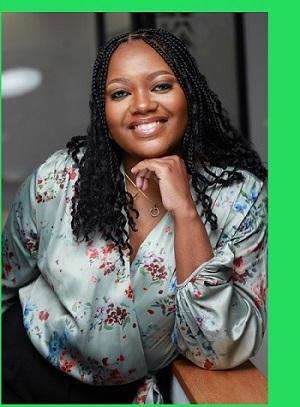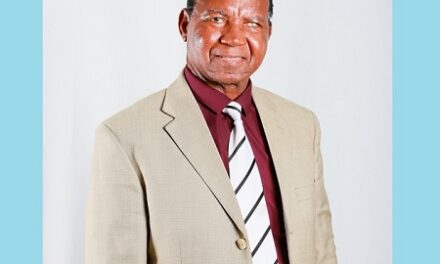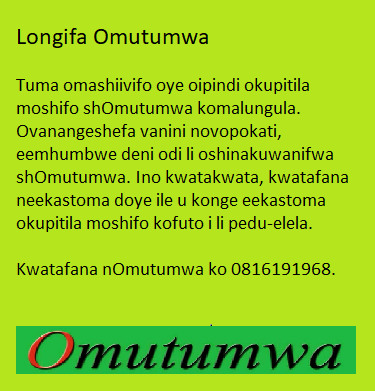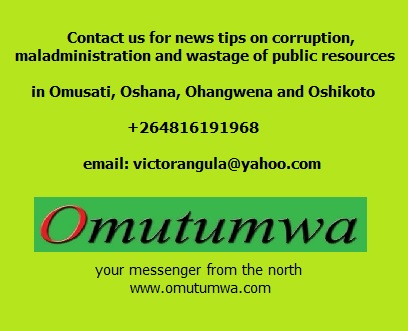In the vibrant ecosystem of media and communications, the synergy between journalism and public relations (PR) professionals is not just beneficial but essential for the heartbeat of our daily news.
This partnership, often unseen but always impactful, serves as the backbone of informed storytelling and journalistic excellence.
Contrary to the outdated view of PR as a shadowy relative of journalism, though merely as a profession of spin doctors, current insights reveal a narrative of collaboration and mutual respect.
Selma Kaulinge, Communications and PR Manager at Nedbank Namibia, sheds light on this interdependence.
“Journalism breathes through the stories told by its sources, ‘news’ is, after all, not what journalists think, but what their sources say,” she says.
Kaulinge points out that decades of research have established that news sources are often likely to be PR practitioners, with anywhere between 40% and 75% of news originating from products of their work. PR and communications are, therefore, critical to the work of journalism.
Media releases and press conferences, often orchestrated by PR professionals, are not mere ancillary contributions but supporters of journalists to keep their fingers on the pulse.
In a world where facts are foundational, and transparency is tantamount, these practitioners are the architects of openness. Their skills in strategic messaging and adept relationship-building enrich the news cycle by providing the raw materials from which credible journalism is crafted.
Therefore, the symbiotic partnership between the guardians of the narrative and the storytellers is not a mere convenience – it is a cornerstone for a functioning democracy, ensuring that the communities in which they operate and society as a whole remain well-informed and empowered.
“Nevertheless, the symbiotic relationship that underpinned news production throughout the 20th century is undergoing a transformation in the 21st century as organisations increasingly assume the role of their own media producers,” Kaulinge remarks.
“This phenomenon further blurs the lines between journalism and public relations, emphasising the growing need for harmony and synergy between the two industries.”
She notes that fostering a positive relationship between communications professionals and members of the media industry involves several key strategies. Open communication and transparency are paramount and will go a long way in building trusted partnerships.
“This doesn’t have to be anything grandiose,” she adds. “It can be as simple as being honest with a journalist and, instead of resorting to defensive tactics, admitting when you lack expertise on a subject.”
According to Kaulinge, regular updates on relevant news, upcoming events, story ideas, and prompt responses to inquiries, will further reinforce this commitment to transparency.
“By demonstrating reliability, honesty, and integrity in all interactions, and by consistently delivering accurate and credible information, communications professionals can nurture strong relationships with journalists,” she says.
A trusted media partner can serve as a valuable ally during challenging times or crises.
“In today’s media landscape, where brand image is of utmost importance and cancel culture abounds, crisis preparedness is crucial,” says Kaulinge. “It’s imperative to develop a comprehensive crisis communication plan in collaboration with your media partners to ensure a coordinated response in times of crisis or controversy.”
More than being a trusted media partner, she emphasises a relationship that adds value and respects boundaries.
“It’s imperative to provide comprehensive information upfront and tailor it specifically for the publication or journalist you’re pitching to. Sending irrelevant pitches not only occupies space in your contacts’ inboxes but also risks damaging your relationships with the media.”
Furthermore, she adds, respecting boundaries is central to upholding the independence and editorial integrity of the media.
“It’s important to try and avoid exerting undue pressure, such as continuous follow-ups, unrealistic time constraints, or attempting to control the narrative. Encouraging feedback from media contacts is essential, as it fosters a culture of continuous improvement.
“However, it’s important not to apply unnecessary time pressure in seeking this feedback.”
PR and communications specialists need to be aware of, and sensitive to, the challenges faced within the media industry.
A 2024 report from the Reuters Institute for the Study of Journalism, notes that the economic downturn globally has put unprecedented strain on newsrooms in the last year. Widespread layoffs have left journalists overworked and concerned about job security.
Locally this began in early 2019 when restructuring processes in the Namibian media industry led to the loss of 40 jobs, representing a 13% reduction in the country’s total media labour force.
“Now more than ever is the time to focus on your relationships with your media contacts,” advises Kaulinge. “Communications professionals need to use these industry shifts to build and maintain meaningful relationships with editors and journalists in their network.”
She suggests actively participating in industry events, conferences, and networking opportunities to establish connections with journalists and media professionals.
“Investing time in cultivating long-term relationships beyond transactional interactions is key.”
Kaulinge further states that the annual Nedbank Women in Media conference provides an ideal platform to build such connections.
Scheduled to take place on 20 April 2024, this will be the fourth consecutive year that Nedbank Namibia will partner with the initiative.
“The event brings together accomplished women in media from diverse backgrounds and fields in order to network, share ideas, and initiate collaborative endeavours,” she states.
Kaulinge explains that beyond the immediate impact of the conference, the Nedbank Women in Media movement hosts workshops, training sessions, and mentoring programs designed to nurture the skills and knowledge necessary for success in the media industry.
This event and organisation are dedicated to addressing the underrepresentation of women’s voices in mainstream media and facilitating connections between women in media and female newsmakers.
“Having women’s voices in the media can provide role models for women and girls, encouraging them to pursue their aspirations,” Kaulinge says. “Through the content they produce and their decisions, women in leadership positions can challenge gender stereotypes and promote gender equality.
“Nedbank Namibia is proud to partner with this worthy initiative, contributing to the advancement of the media industry in Namibia.”
In the photo: Nedbank Namibia’s Public Relations and Communications Manager, Selma Kaulinge.







